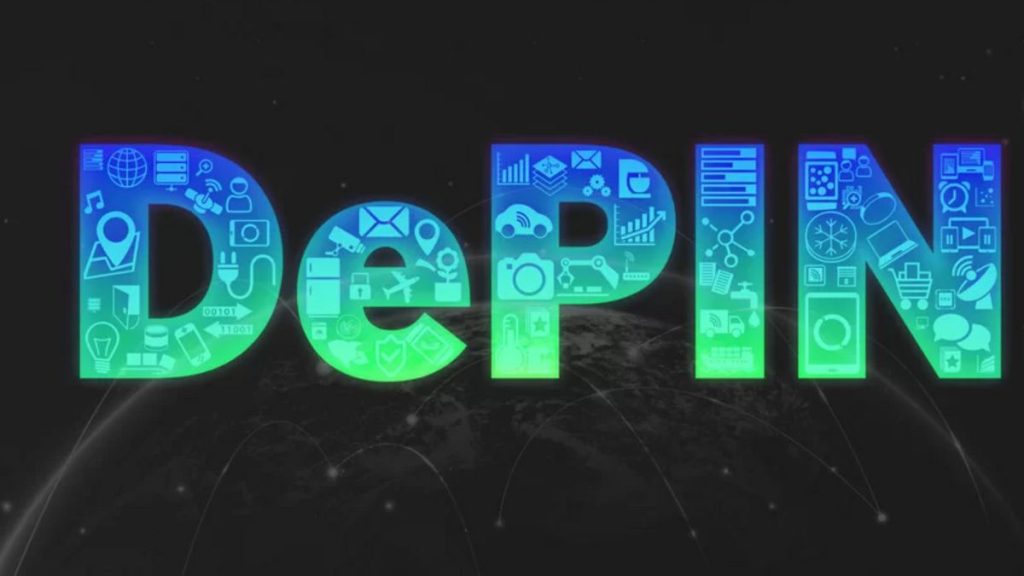The term DePIN has been spreading rapidly within the crypto community, with many believing that DePIN will lead the trend in the upcoming 2024-2025 bull run.

What is DePIN?
DePIN (Decentralized Physical Infrastructure Network) refers to projects that build infrastructure networks on the blockchain, acting as intermediaries to connect infrastructure providers with customers who need these services.
For example, consider Uber’s business model:
- Drivers provide transportation infrastructure.
- Uber acts as a network connecting drivers with customers looking for rides.
DePIN projects operate similarly to traditional models but integrate blockchain technology, making transactions between users and customers transparent and decentralized, without third-party control.
Types of DePIN Infrastructure
DePIN infrastructure is categorized into two types:
- Physical Resource Networks (PRNs):
- These projects provide hardware-based infrastructure, such as:
- Hotspots for WiFi, 5G connectivity.
- Drive-sharing networks for vehicles, taxis, etc.
- These projects provide hardware-based infrastructure, such as:
- Digital Resource Networks (DRNs):
- These projects offer data-related infrastructure, including:
- Bandwidth services
- Data storage (e.g., decentralized cloud storage)
- VPN services
- These projects offer data-related infrastructure, including:
How DePIN Differs from the Traditional Sharing Economy
The DePIN concept has existed since 2021, under various names such as MachineFi, Proof of Physical Work, and EdgeFi.
In late 2022, Messari conducted a community poll to unify the terminology, and DePIN was the chosen name.
A comparable traditional model is the Sharing Economy, where one party provides resources (goods, services, infrastructure), and another shares the network and customers. Profits are then split between both sides. This model is used in platforms like Airbnb, Shopee, and eBay.
The Problem with the Traditional Sharing Economy
A major issue with the Sharing Economy is centralization. The network provider holds full control over business operations and profit distribution.
For example, in Grab’s case, as reported by Vietnamnet:
- Grab increased its commission fees from 22% to 25%, and by 2018-2019, it reached 28%.
- As a result, drivers’ monthly earnings dropped by 50%, significantly affecting their income.
How DePIN Solves This Issue
DePIN aims to bring decentralization to the Sharing Economy by implementing token governance, ensuring fairness between infrastructure providers and network operators.
For example, if Grab were to integrate DePIN,
- Drivers would earn Grab tokens for completing rides.
- These tokens could be converted into cash.
- Drivers could participate in governance, voting on platform policies and business decisions.
By giving providers more control over profit distribution and governance, DePIN makes the Sharing Economy more equitable and decentralized.
Pros and Cons of DePIN
Pros
DePIN brings a fresh wave to the crypto market by integrating real-world products and infrastructure. Its key advantages include:
- Decentralization: Since DePIN leverages blockchain technology, its decentralized nature is a significant advantage over Web2 projects. Decentralization ensures transparent transactions between users and customers while increasing the distribution of power within the network.
- Fairness and Transparency: DePIN fosters fairness and transparency between platforms, providers, and customers. Additionally, the value of DePIN products is determined by the community rather than a centralized entity.
- Profit Optimization: DePIN allows users to utilize real-world infrastructure within the Web3 ecosystem, helping them maximize their profits.
- Scalability: DePIN represents a breakthrough in blockchain adoption, enabling Web3 to connect with real-world infrastructure and products. This enhances Web3’s scalability and usability.
Cons
Despite the excitement around DePIN’s decentralization and capital efficiency, it still faces significant challenges:
- Limited Market Presence: Compared to other crypto sectors like GameFi and Lending/Borrowing, DePIN remains relatively small.
- Currently, there are only around 61 DePIN projects with a total market cap of $11 billion, which is a modest figure considering DePIN has existed since 2021.
- Growth Barriers: DePIN projects struggle with sustainable revenue models and face legal and technological barriers that hinder broader adoption.
- User Accessibility Issues: Like blockchain gaming and Real-World Assets (RWA), DePIN has high entry barriers due to its reliance on blockchain technology. Many users find Web3 complex and unfamiliar, making adoption more challenging.
